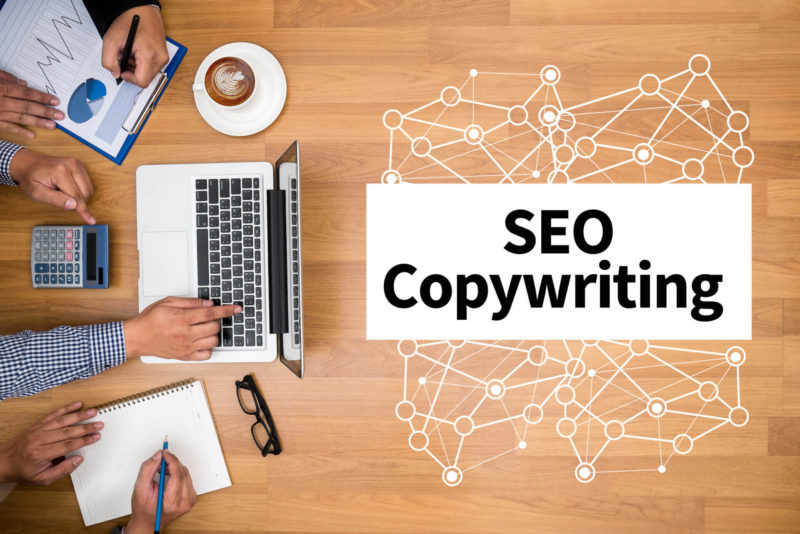How to drive conversions with on-brand SEO copywriting
Are your web pages not converting? Contributor Jessica Foster explains how to create an SEO-focused brand message that builds trust and drives conversions.

In this article, you’ll get the lowdown on why on-brand content is so important — as well as how to curate the right message for the right audience at the right time.
SEO copywriting: What’s branding got to do with it?
I like to say “2018 is the year of personal branding” given the trends I’m seeing. Though larger-scale business branding is important, I am finding more and more customers are looking to put a “face” to the business they want to work with. It’s not enough to simply drive traffic to your site or share a ton of articles on social media. You have to build a connection with your audience that encourages trust and establishes you as an authority in your niche.
Great SEO copywriting involves much more than simply writing for Google, or even writing for your target audience. It is a beautiful balance of both, and to do it effectively, you often have to think outside the box.
To break it down, SEO copywriting is a way of writing that is both SEO-friendly and speaks to your audience in a way that attracts and converts them. It is NOT a means of simply plugging in keywords and walking away.
In fact, people often ask me about keyword density when it comes to my writing, and in reality, that metric hardly ever pops into my mind.
If you are truly sharing high-quality, accurate and informative content that answers a question your audience may have, it’s already on its way to being SEO-friendly. You then just need to do the research to confirm that those terms have the search traffic and competition level that you are after.
As I mentioned above, your brand message is an important component of SEO copywriting — as is often overlooked by copywriters and SEO experts alike. It plays a huge role in how you write, who you are writing for, the action you want them to take and more.
So, how do you harness your brand message to write SEO content?
How to find your brand message
Establishing a brand message is an important step in starting a business, even though many business owners skip this step. Perhaps they have looked at the marketplace, homed in on their target audience and know what they offer, but they haven’t rolled it all together cohesively.
The result is often website and marketing copy that reads flat. It ends up being a lot of generic jargon and doesn’t truly capture the essence of what the business is about.
What’s the consequence? Well, even if potential clients make it to their site, they won’t get a solid idea of what the site is about and how the services apply to them. If they don’t see the connection, they won’t convert.
In order to find the brand message of a business, there are a few fundamental questions to ask. Here are some questions that will help get the wheels turning when it comes to figuring out the right message for your particular audience.
1. What is it about your service or product that makes it unique?
First, you must define what it is that you offer that makes you stand out from your competition. Even if they have highly similar services/products, it is likely that there is at least one thing that sets you apart.
For example, it could be that you “don’t cut corners” when it comes to SEO, or that the products you offer are “locally sourced and organically grown.” Whatever it is, knowing what that one thing is that makes you different will help you attract the kind of audience that is wooed by your unique offer.
2. What value do you provide to your customers or clients?
Think beyond surface-level value (such as money or giving them a product), and really get down to what value your business offers.
For instance, it could be the convenience of outsourcing their digital marketing needs. Or it could be the relief of working with a trustworthy SEO agency that has their back. If you think about it, both of these offers could be taglines in and of themselves.
A lot of times you will find that your audience isn’t necessarily looking for more money — but much more than that. It is likely that your competitors are pitching “more sales,” but how can you sweeten the deal?
3. Who is your ideal customer/client?
When I ask clients this question, the usual answer is something like “small business owners,” “digital marketing professionals,” or even “creative entrepreneurs.” The problem with these answers is they give you very little information to go on when it comes to creating a brand message that appeals to your “ideal client.”
You’ll want to create a more holistic profile around who this person/people are by asking:
- What kind of small business owner are they?
- What are their problems?
- What are their interests?
- What are they like?
The more you know about them, the easier it will be to figure out what they want and how to reach out to them. This is the information you will incorporate into your SEO content.
4. What’s the #1 goal you have when it comes to your website?
Typically, the goal of your website is to drive conversions. But again, that’s not quite specific enough. You should have a plan for how you want users to engage with your website.
- Do you want them to visit your blog and get more information about a certain topic?
- Do you want them to purchase items from your sales page?
- Do you want them to fill out a contact form to schedule a free consultation with you?
All of these actions are a bit different, and thus, each calls for a different kind of message. The idea of what actions you want users to take and your brand messaging should work together cohesively to help drive conversions through a website.
5. What problem(s) do your services/products solve for your clients/customers?
Similar to Question 2, this question serves to dig deeper into what you actually do for your clients or customers.
If your business is to sell computers, the problem isn’t “My customer needed a laptop, and now they have one.” A better answer would be “My customer wasn’t able to work from home without a laptop. I was able to provide them with one at an affordable price.” See how you are then recognizing a more specific problem and how you were able to solve it.
You may even want to make a list of the most common questions or struggles of your potential and past clients. How can you make business and life easier for them? The answers to these questions pose opportunities for content on your website.
6. What style/tone appeals best to your target audience?
A lot of business owners get sucked into the marketing jargon they see online and apply it to their own sites. This may work for some businesses, but not all. Your website copy should be less about what appeals to you and more what appeals to your target audience.
If you have fully answered Question 3, you may have a solid idea about this already. You should know what tone and style fit best with their personality and what they are after.
Test, test and test again!
An important component of writing great SEO content is testing different versions and styles of copy.
There are many ways to do this, but perhaps the most well-known and easiest way is through A/B testing. With A/B testing, you test two (or more) versions of your content to see which performs best.
For example, you may have two nearly identical posts, but you want to test the effectiveness of two different headlines. You would then circulate both posts and see which performed best (looking at traffic, conversions, clicks and so on.) The results of this test should tell you what kinds of headlines resonate with your audience.
You can make variations on nearly anything. The most common are:
- Page title.
- Post title.
- Content length.
- Content design.
- Content structure.
I suggest making only one or two changes so you can pinpoint which element was the deciding factor in making your content perform better or worse.
If you don’t have time for A/B testing before you publish content, you can always make incremental edits over time and track the performance metrics.
For example, if the page is not performing well (trafficwise or on social networks), and you change the title and those metrics improve, it’s safe to assume one variation was the culprit.
There is no problem in trying out different kinds of copy to see what works best with your audience. In fact, I highly recommend it! As an added measure, you can even create a questionnaire of sorts for prospects or past customers to assess the impression and effectiveness of your content.
If you are able to answer these questions in depth, you are well on your way to creating a cohesive brand message. On-brand SEO copywriting is really about incorporating these different components into your copy so that it is focused on your ideal customer and what they want/need. If you can do that, they will see the value in what you have to offer and be more likely to buy.
Optimizing your landing/service pages
Similar to your home page, landing pages and service pages can be the first thing users face when they come to your site.
For that reason, these pages should be optimized for both conversions and SEO. Meaning, they should not be an afterthought and should serve your business as much as any other page on the site.
The difference with these pages is that you will likely be addressing only one topic or pain point, rather than covering a range of benefits like you did on the home page.
You should make it very clear early on what issue you are trying address for your customers/clients, what information can be found on that page and what action they should take to contact you or obtain more information.
A compelling H1 tag is the first step in this process. Like the home page example, it should relate directly to what users are looking for, all while containing the focus keyword for that page, if possible.
Outline the page in a way that encourages users to keep reading and looking for more information. Having a wall of text with little to no organization will leave users yawning, or worse, cause them to bounce off the page.
Your H2 and H3 tags are your best friends here, as they can lead users on that journey through thought-provoking questions, descriptive headings and more. They are also an opportunity for more keyword usage.
Finally, like the home page, you will want to include CTAs (calls to action) throughout and at the bottom of the page. That way, you can catch users at the end of the page if they decide they are ready to contact you.
Your landing and service pages should be well-organized and intentionally written. They are not a place for stuffing keywords, huge blocks of text or obnoxious sales copy. Your main purpose here should be to address a very real struggle or concern your audience has, and then convey how you are a unique and effective solution to that problem.
Blog posts
Many SEO experts and business owners alike make the mistake of using blog posts as filler content. I feel if you are going to spend time or money on a piece of content, it should be working for you in some way. This could be by generating organic traffic, promoting a content upgrade or providing value to your audience.
I am a proponent of longer informative content over short blog posts. Your brand messaging matters a lot here. If your blog posts don’t work cohesively with the rest of your web copy, users will be left feeling confused and even uneasy. If your blog content is disjointed, it makes it harder for your audience to trust your knowledge and feel you are the best fit for them.
Listen to your audience, and create content that answers their queries and addresses their concerns. Even if you aren’t well-versed in SEO, you can still rest easy knowing that this is content your audience wants to read.
Blog posts, if done well, can sell on their own. If you provide enough value, your audience will be enticed to learn more, opt in for a freebie, sign up for your newsletter.
Here are a number of tips to help optimize blog posts:
- Use H2 and H3 tags to break content up into well-organized chunks that guide the reader through the post.
- Use italics and bold font, photos, videos, GIFs and more to keep them engaged.
- Include references to other posts and pages on your site through internal links to lead them down that rabbit hole of information.
- Make your blog posts interesting, easy-to-read and fluff-free.
- Stay on-brand and use terminology your audience will relate to and understand.
Overall, your blog posts are another opportunity to relate to your audience, so don’t waste it! By incorporating your brand messaging into your posts, you can address the real concerns of your audience and provide even more value, which helps build trust.
Include your existing SEO strategy, and then your content is better suited for both search engines and your potential customers/clients.
Your brand messaging matters
Though an often overlooked aspect of SEO content writing, brand messaging is important when it comes to driving conversions through your web copy.
Your home page, landing pages, and even blog posts are all opportunities to relate to your target audience and convey what your business is really about. It gives them a glimpse into what your business stands for, what it provides, and why you may be the best fit for them.
If your web pages are generating organic traffic but aren’t converting, it could be that you haven’t yet found the right message for your audience. Home in on this, incorporate it into your content, and be in awe of the results.
Want more information on SEO copywriting? Here is a complete guide and checklist for optimizing SEO content.
Contributing authors are invited to create content for Search Engine Land and are chosen for their expertise and contribution to the search community. Our contributors work under the oversight of the editorial staff and contributions are checked for quality and relevance to our readers. Search Engine Land is owned by Semrush. Contributor was not asked to make any direct or indirect mentions of Semrush. The opinions they express are their own.


